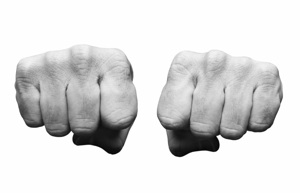A magazine where the digital world meets the real world.
On the web
- Home
- Browse by date
- Browse by topic
- Enter the maze
- Follow our blog
- Follow us on Twitter
- Resources for teachers
- Subscribe
In print
What is cs4fn?
- About us
- Contact us
- Partners
- Privacy and cookies
- Copyright and contributions
- Links to other fun sites
- Complete our questionnaire, give us feedback
Search:
The blended bodies experiment

In this effect you prove you can remotely sense the world through another person’s body. To demonstrate this remarkable skill you hand the spectator a coin, and turn your back. Without looking at them instruct the spectator to make a fist with each hand and hide the coin in one of their fists. To let you begin to blend your body with their body, ask them to raise the hand with the coin in it and hold it to their forehead and to concentrate on how the coin feels as you start to resonate with them. After a short time you tell them you are ready, and that they should hold both fists out straight in front of them. You turn around for the first time, and as your body is now tuned with theirs you are correctly able to identify the hand concealing the coin.
Blending bodies or bending truth?
This quirky trick, which appeared on screen in the movie ‘The Illusionist’, uses a bit of psychology and a lot of physiology. Physiology is the study of how the human body works. Here you are making use of the simple fact that if a person holds one hand in the air for a short time, gravity means that less blood will flow to the raised hand than to the other hand in a normal position. So, when the two hands are brought together the hand that’s been raised (the one with the hidden coin) will look slightly different. The tone of the skin and fingernails will be slightly paler. Your subject won’t notice this, and neither will their two hands feel any different to them. They aren’t looking for any of these clues. The changes are small but you are looking for them, and in particular you are looking for the difference between the two hands. It turns out that people are good at detecting the difference between things. With a little practice you can detect the hand that had been raised quite easily, and the rest is just performance.
This trick is a nice example of how magicians combine lots of different fields of science to help make a trick work.


